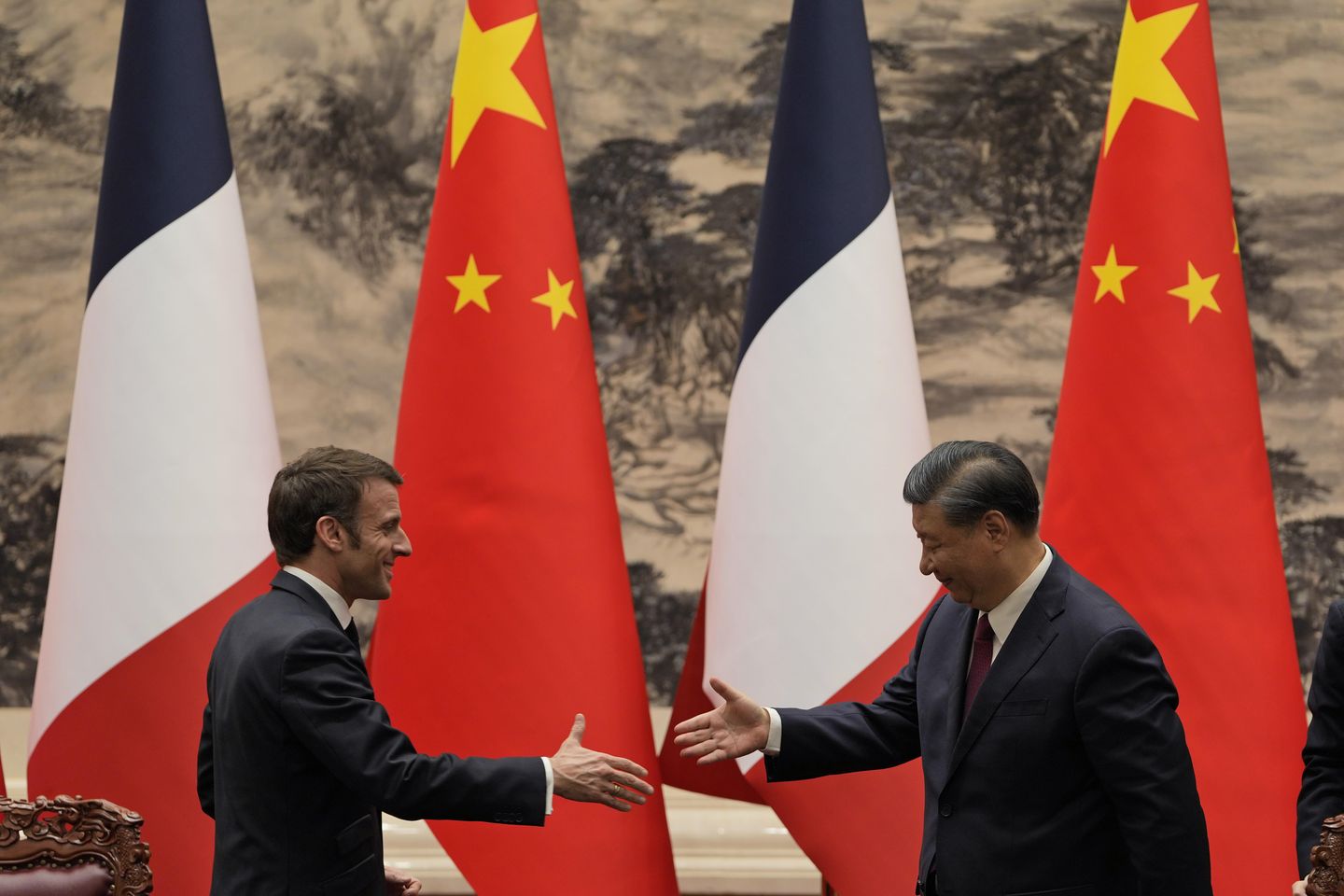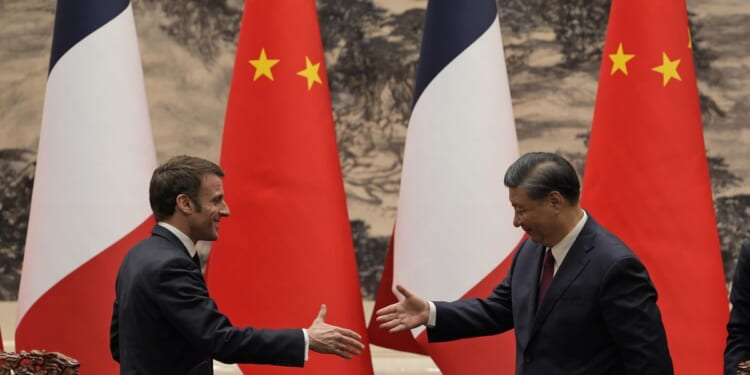
TAIPEI, Taiwan (AP) — Ukraine, trade and investment are expected to dominate Chinese leader Xi Jinping’s first trip to Europe in five years, as the Asian giant rebuilds its foreign relations after a prolonged absence during the Covid-19 pandemic.
Xi will start the tour in Paris on Monday, meeting with French President Emmanuel Macron, who has been stressing the idea of European strategic autonomy from the U.S. On a visit to Beijing last year, Macron courted controversy by saying France would not necessarily always align with the U.S. in foreign policy, an apparent reference to American support for the self-governing republic of Taiwan, which China claims as its own territory to be annexed by force if necessary.
After leaving France, Xi will visit Hungary and Serbia, both seen as China-friendly and close to Russian President Vladimir Putin, rebuffing Western criticism of his full-scale invasion of Ukraine.
Xi’s European visits will be closely followed in Washington for signs of diminishing support for its key foreign policy goals.
The Chinese leader will arrive in France just as Paris is putting the finishing touches on its preparations for hosting the Summer Olympics, an event in which China invests huge amount of national prestige.
France sees Xi’s visit, which officially marks 60 years of French-Chinese diplomatic relations, as an important diplomatic moment, and wants to focus on China’s broader relations with the EU. Macron invited European Commission President Ursula von der Leyen to the talks Monday.
It comes a month before Macron, who positions himself as the diplomatic leader of Europe, hosts Biden for a similar state visit.
It is also a sign of “the good vibes from Macron’s visit to China in April last year,” said Kerry Brown, professor of Chinese Studies and director of the Lau China Institute at King’s College London.
“This is a highly strategic visit to Europe by Xi. And in his itinerary you can divine the runes of Chinese policy on Europe now, bolstering the traditional links as far as possible, and reinforcing new ones,” Brown said.
Xi’s is also visiting Budapest, where Hungarian Prime Minister Viktor Orbán, in power for 14 years, is facing political challenges from the opposition over his authoritarian style.
Hungary has straddled a middle ground between its membership in the EU and NATO and an unusual openness to diplomatic and trade relationships with eastern autocracies such as Russia and China.
Orbán, a right-wing populist who has forged close ties with Russia, delayed Sweden’s entry into NATO for months. China has cited NATO expansion as provoking Russia to invade Ukraine.
Hungary is the first EU member to participate in Xi’s signature Belt and Road Initiative that seeks to build billions of dollars of roads, ports, power plants and other infrastructure across Asia, Africa and beyond.
Orbán was the only EU leader to attend a conference in Beijing on the BRI, which has been criticized for burying participating countries in debt and failing to deliver on promised investments, something that prompted Italy to drop out last year.
Despite that, Hungary’s government has deepened its economic ties with China, with the proliferation of Chinese electric vehicle (EV) battery factories across the country gaining the most attention. Near Debrecen, Hungary’s second-largest city, construction is underway of a nearly 550-acre, 7.3 billion euro ($7.9 billion) EV battery plant, Hungary’s largest-ever foreign direct investment.
China has also invested heavily in infrastructure to link Hungary with its southern neighbor Serbia, Xi’s next stop on his European tour.
In 2014, Hungary and Serbia concluded an agreement with Beijing to modernize the railway between their capitals of Budapest and Belgrade, part of a Belt and Road plan to link up with the Chinese-controlled port of Piraeus in Greece, to the south, an entry point for Chinese goods to Central and Eastern Europe.
The more than $2 billion project is expected to be completed in 2026, after numerous delays.
In Serbia, Xi will hold talks with President Aleksandar Vucic, with whose government China has built strong relations.
The two countries have a long history of friendship, particularly since 1999, when NATO bombed the Chinese embassy in Belgrade, killing three Chinese nationals, during the air war to end Serbia’s brutal crackdown on ethnic Albanian separatists in Kosovo.
The U.S. apologized, saying faulty target selection was to blame, but the incident led to violent attacks on U.S. diplomatic installations in China and fueled anti-American sentiment in both countries that endures to this day.
In 2022, shortly after the Russian assault on Ukraine, Serbia took semi-secret delivery of a sophisticated Chinese anti-aircraft system flown in on six Chinese Air Force Y-20 transport planes. The arms delivery over the territory of at least two NATO member states, Turkey and Bulgaria, was seen by experts as a demonstration of China’s growing global reach.
China claims neutrality in the Ukraine conflict but Xi and Putin declared their governments had a “no limits friendship” before Moscow’s attack on Ukraine. China has refused to call the Russian assault an invasion and has been accused of bolstering Russia’s capacity to produce weapons and its military advantage against Ukraine, which is awaiting tens of billions in Western military aid.
A U.S. military aid bill passed last week allots $61 billion for Ukraine, as well as $8 billion to counter Chinese threats in Taiwan and the Indo-Pacific, which China has condemned as a dangerous provocation.
China’s foreign ministry said the U.S. position on Chinese defense trade with Russia was hypocritical when considered alongside the amount of military assistance Washington is providing to Kyiv.
China denies selling arms to Russia and the U.S. says it has found no direct evidence of such evidence of such. However, China does sell machine tools, microelectronics and other technology that Moscow in turn is using to produce missiles, tanks, aircraft and other weaponry for use in its war against Ukraine, according to a U.S. assessment.
___
Associated Press writers Angela Charlton in Paris and Justin Spike in Budapest, Hungary, contributed to this report.

